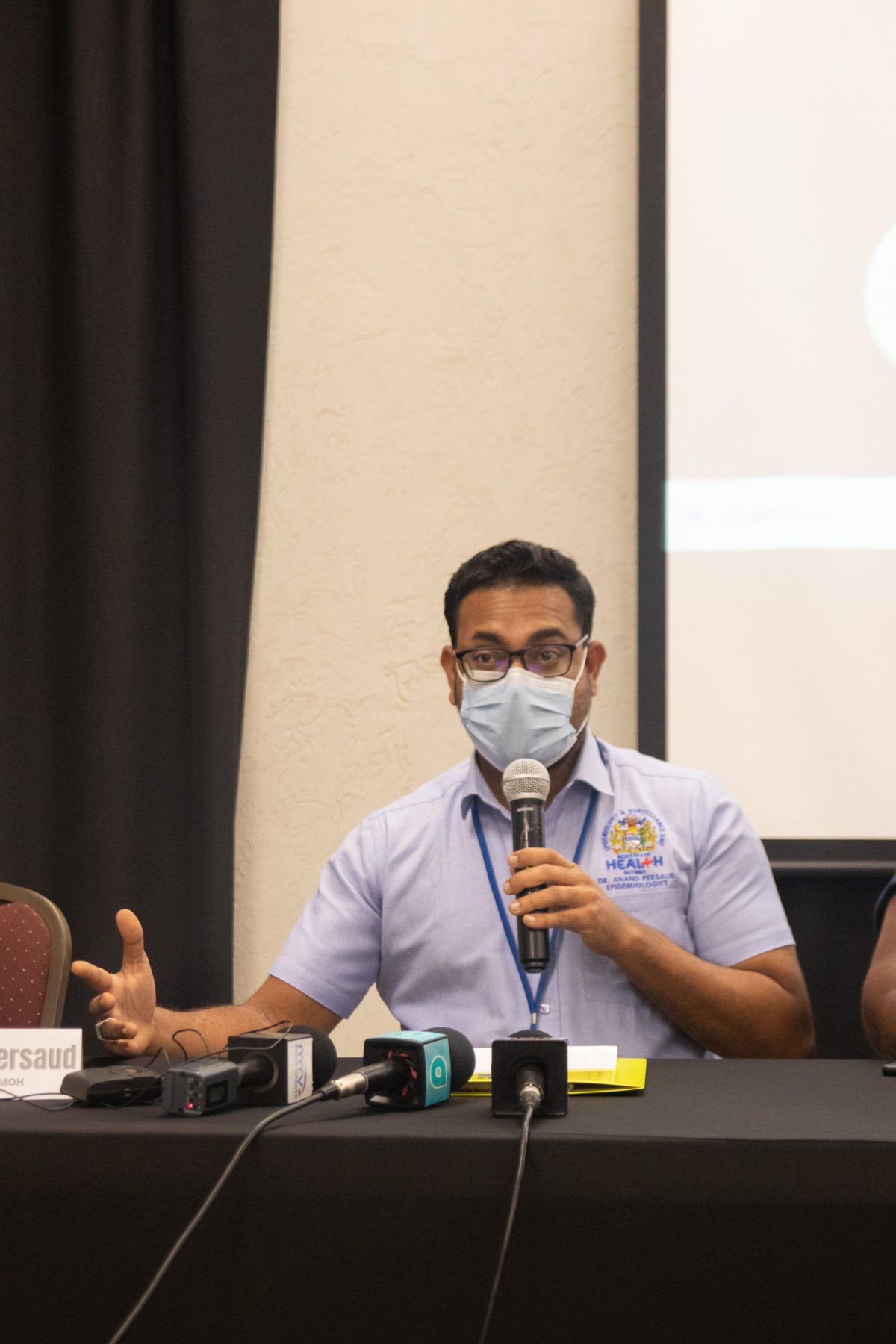Although Guyana has just two confirmed cases of the monkeypox virus, health officials here are taking no chances and according to Dr Tracey Bovell – doctor in charge at the Infectious Diseases Hospital – the facility has set aside space to cater for some 37 patients.
And should the need arise, the hospital which now caters for other diseases outside of COVID-19 for which it was originally established, has the capacity to cater for another 22 beds. The space would not only cater for confirmed cases but also suspected cases. Addition-ally, other regions have also prepared spaces to accommodate monkeypox patients.
Dr Bovell was at the time speaking at a forum organised by the Ministry of Health under the theme “Reporting on the Mon-keypox Outbreak” held at the Duke Lodge, Kingston.
Guyana’s initial case was reported on August 23 – a man in his fifties who resided in the country and had no recent travel history. It was reported that the man was a taxi-driver. The second case was reported on Monday and the victim is said to be in her thirties. Monkeypox is usually a self-limiting disease with symptoms lasting from two to four weeks. Most people with monkeypox get better on their own without treatment.
Yesterday Dr Anand Persaud, epidemiologist at the ministry, said that in both cases the patients were infected through close contact.
Minister of Health, Dr Frank Anthony, cautioned that while a lot of the monkeypox cases worldwide are among men who have sex with men (MSM) there has to be sensitivity when reporting on it as he pointed out that persons in other populations are also infected. The MSM aspect has to be addressed but has to be done in a manner that does not further stigmatize that population because this could push them underground and work against managing the spread of the disease. He explained that contacts of infected persons have to be quarantined for about 21 days and if there is stigma then the contacts would not cooperate.
Dr Persaud informed that 98.2% of cases worldwide are male with the median age being 36 years (30 to 43 years). Males 18 to 44 years are disproportionately affected and account for 77.9% of cases with just 1.8% female. Further, 95.1% of cases identified as MSM while 1.6% were identified as bisexual men. The doctor also disclosed that 44% of cases are HIV positive from available data while 297 cases were reported to be health workers and 92% of cases reported a sexual encounter as the most common means of transmission. 59.9% were in a party setting with sexual contact.
The incubation period (interval from infection to onset of symptoms) of monkeypox is usually from 6 to 13 days but can range from 5 to 21 days. In July the World Health Organi-zation (WHO) declared the growing monkeypox outbreak a global health emergency, its highest level of alert.
Writing for the ministry recently, Dr Tariq Jagnarine explained that after exposure, it may be several days to a few weeks before an infected person develops symptoms. Early signs of monkeypox include flu-like symptoms such as: fever, chills, headaches, muscle aches, fatigue, and swollen lymph nodes.
After a few days, a rash often develops, he explain-ed, while noting that the rash starts as flat, red bumps, which can be painful. “Those bumps turn into blisters, which fill with pus. Eventually, the blisters crust over and fall off – the whole process can last two to four weeks. Persons can also get sores in their mouth, vagina, or anus.”
Jagnarine added that not everyone with monkeypox develops all of the symptoms. “In fact, in the current [2022] outbreak, many cases aren’t following the usual pattern of symptoms. This atypical presentation includes only a few lesions, no swollen lymph nodes, less fever, and other signs of illness. Persons can have it and not know it. But even if they don’t show any signs of infection, it can spread still spread to others through prolonged close contact.”
Addressing the transmission of the virus, Jagnarine noted that it can spread from person to person, but pointed out that it was less common. “Person-to-person spread [transmission] occurs when persons come in contact with the sores, scabs, respiratory droplets or oral fluids of an infected person usually through close, intimate situations like cuddling, kissing, or sex. Researchers aren’t sure if the virus is transmitted through semen or vaginal fluids,” he explained.
He added that it can also be spread by coming into contact with recently contaminated materials like clothing, bedding, and other linens used by an infected person or animal.






